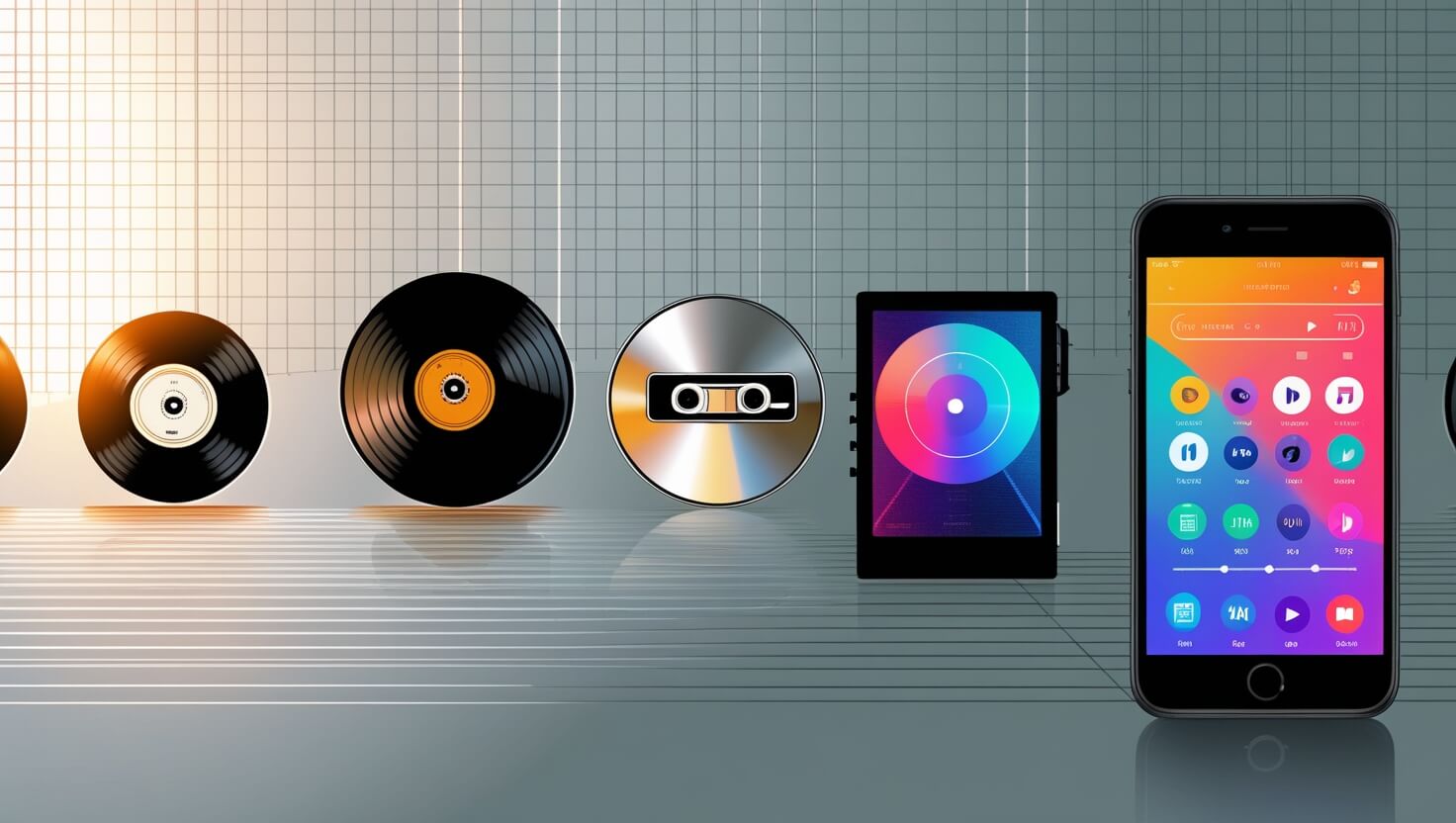Over the past few decades, the way we consume music has undergone a seismic shift. From physical formats like vinyl, cassettes, and CDs to digital downloads and finally streaming platforms, this evolution has not only redefined how we listen to music—it has completely transformed the music industry itself.
Let’s take a closer look at how music consumption has changed over time, the technologies that marked each era, and what this ongoing transformation means for artists, producers, and fans in the digital age.
The CD Era: Tangibility Meets Quality
In the 1980s and 1990s, compact discs (CDs) revolutionized the music experience. While vinyl and cassette tapes were still popular, CDs offered a new standard in durability, audio fidelity, and user experience. You could skip to specific tracks, enjoy longer lifespans, and indulge in rich album art and liner notes.
What Made CDs So Dominant?
- Superior Sound Quality: CDs delivered digital audio at 44.1 kHz/16-bit, far surpassing the analog limitations of tapes.
- Durability: Unlike cassettes, which wore out over time, CDs offered a more resilient format—provided they weren’t scratched.
- Physical Ownership: Buying a CD wasn’t just about the music. It was about owning a collectible—complete with cover art, lyrics, and sometimes even bonus content.
- Retail Powerhouses: Stores like Tower Records, Sam Goody, and Virgin Megastore thrived during this time, making music browsing and buying a cultural activity.
Even as the CD market peaked in the early 2000s, a new digital era was about to upend everything.
The Digital Download Era: Music Goes Online
The early 2000s saw the dawn of music digitization. Platforms like Napster, Kazaa, and later iTunes introduced the concept of owning digital music files, changing how people thought about music ownership forever.
The Big Shift
- From Albums to Singles: Consumers were no longer forced to buy full albums. With platforms like Apple iTunes, they could cherry-pick individual songs for $0.99.
- Portable Devices: The Apple iPod made it easy to carry thousands of songs in your pocket, sparking a new generation of portable listening.
- Piracy Issues: Services like Napster highlighted consumer demand but also triggered a major crisis for record labels, with rampant illegal downloads.
- New Business Models: Legal platforms like iTunes Store helped stabilize the industry by offering a secure way to purchase and download music files.
Want to explore how music distribution works today? Music Distribution Explained: Getting Your Music on Spotify & Apple Music
External Resource: iTunes Store (Apple) – Explore the digital platform that once dominated music downloads.
The Rise of Streaming: Access Over Ownership
The 2010s ushered in a new paradigm: streaming. Platforms like Spotify, Apple Music, Amazon Music, and YouTube Music shifted the model from buying songs to subscribing for access.
Why Streaming Took Over
- Unlimited Access: Listen to millions of songs instantly on any device, from smartphones to smart speakers.
- Affordable Plans: With both free (ad-supported) and premium (ad-free) options, streaming became accessible to a massive global audience.
- AI-Powered Discovery: Platforms now use algorithms and machine learning to personalize playlists and suggest music based on user habits (e.g., Spotify's Discover Weekly).
- Data-Driven Decisions: Labels and artists now analyze listener data to target promotions, design tours, and optimize release strategies.
For musicians, the exposure potential exploded—but it came with lower per-stream royalties, sparking ongoing debates about fairness.
Learn how royalties work in this streaming age: How Music Royalties Work: A Comprehensive Breakdown for Artists
External Services:
- Spotify for Artists – Tools and insights for musicians to track performance and audience data.
- DistroKid – An affordable service to get your music on streaming platforms worldwide.
Impact on Artists and Producers
For today’s musicians, success isn’t just about talent—it’s about strategy, frequency, and visibility. The rules of the game have changed:
How Artists Have Adapted:
- Singles Over Albums: The rise of playlists has made releasing frequent singles more impactful than waiting to drop full-length albums.
- Focus on Metrics: Success is now measured by stream counts, playlist adds, monthly listeners, and engagement—not just sales.
- Social Media Integration: Artists build communities on platforms like TikTok, Instagram, and YouTube Shorts to go viral and drive traffic to their streams.
- Global Distribution: With streaming, even indie musicians can reach fans worldwide, bypassing traditional gatekeepers.
Want to grow your fanbase in the streaming world? Building Your Fanbase: Strategies for Indie Musicians
External Tools:
- Bandcamp – A fan-focused platform where musicians sell directly to supporters.
- Hootsuite – Social media scheduler to keep your music promotion consistent and effective.
What’s Next in Music Consumption?
As technology continues to evolve, the future of music may look even more personalized, immersive, and decentralized.
Future Trends to Watch:
- AI-Personalized Playlists: Platforms like Spotify and YouTube already use AI, but expect even deeper personalization with emotional and contextual awareness.
- Blockchain & NFTs: Artists are exploring NFTs for ownership, concert ticketing, and exclusive releases, offering new monetization methods.
- VR & Spatial Audio: With developments like Apple Vision Pro, immersive listening experiences in VR or AR spaces may become the norm.
- Music in Gaming & Metaverses: Games like Fortnite and Roblox are hosting virtual concerts, indicating a future where music integrates more closely with virtual environments.
Already using music for content creation or business? Start Your Free Trial with XYZ Platform – Download Commercial-Use Music Today
External Resources:
- Audius – A decentralized streaming platform leveraging blockchain for artist ownership.
- Lickd – Licensed mainstream music for YouTube and creators, compliant with copyright regulations.
Final Thoughts
Music consumption has transitioned from ownership to access, from physical collections to digital streams. While the ways we listen have evolved, one thing remains constant—our love for music. Whether you’re an indie artist or an avid listener, understanding these changes can help you navigate and appreciate the ever-evolving soundscape of our time.
Which era do you miss most—or are you excited for what’s next?
